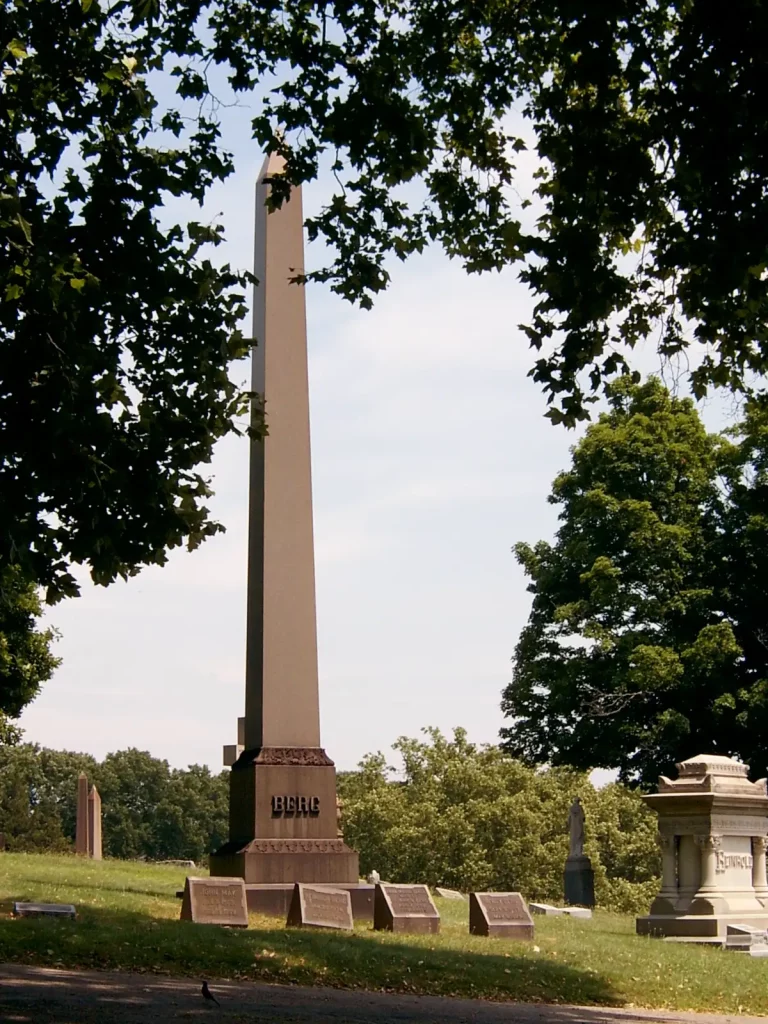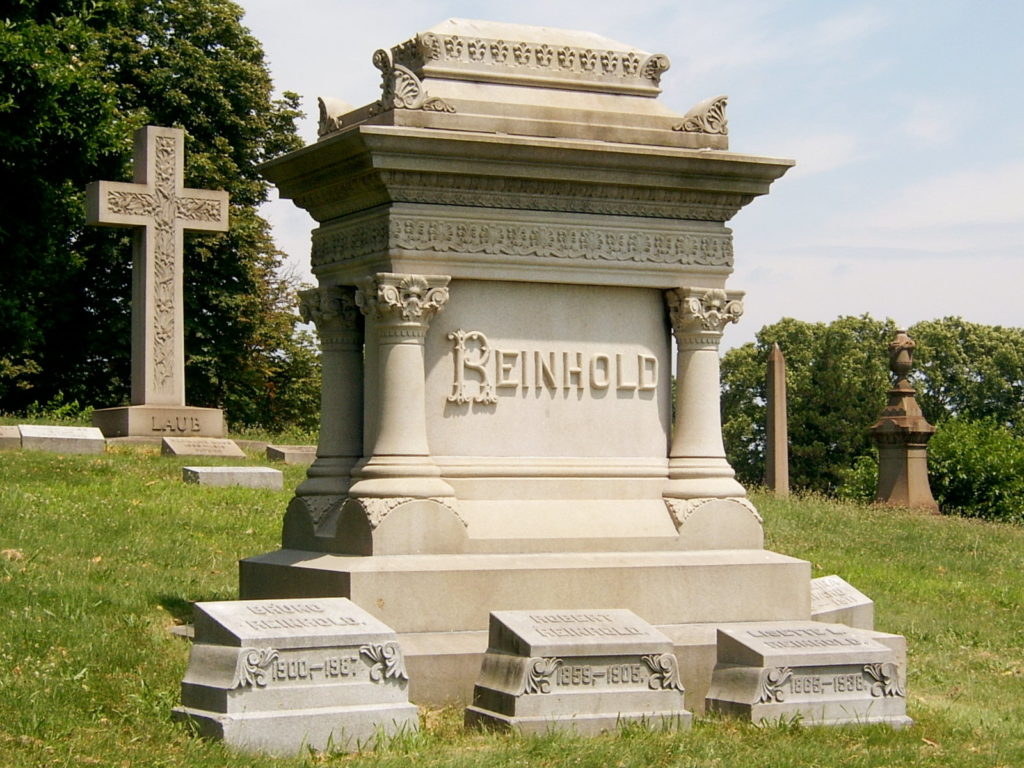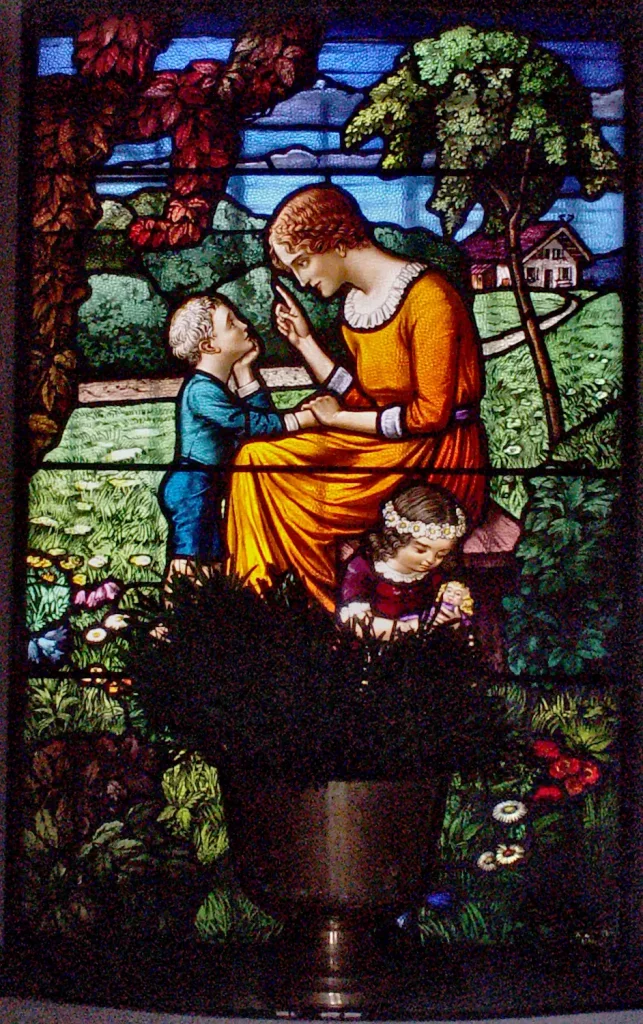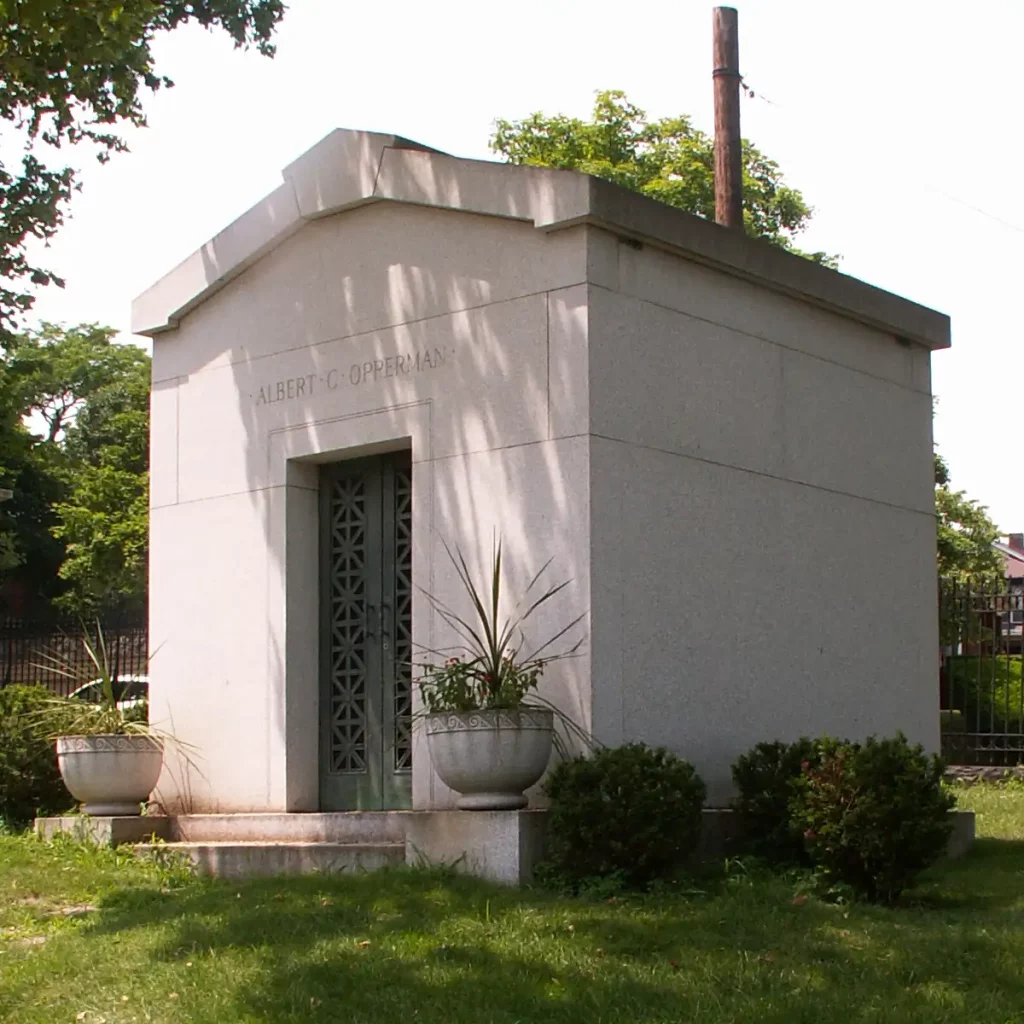
A fine example of the Egyptian style that was very popular among Masons in the early twentieth century. George Mesta owned a machine shop in Homestead. It was (and this is not an exaggeration) a mile long. His wife Perle (also buried here) ultimately made more of a mark on the world after George died in 1925: she moved to Washington and became the city’s top hostess. President Truman made her ambassador to Luxembourg, where she navigated the minefield of American-Luxembourgeois relations with aplomb.
The picture above was from 2014. Below, three pictures from 2022.









